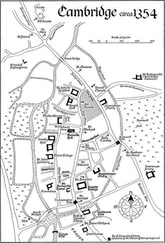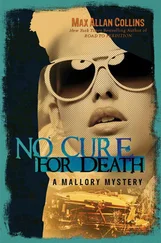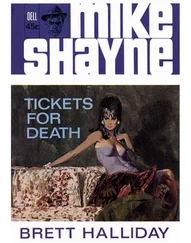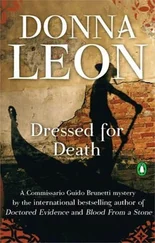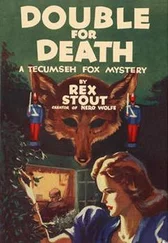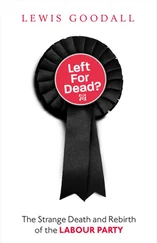Now, the two boys in question made a beeline for the beanbag, shrieking and flinging themselves onto it like tiny stuntmen taking a fall. Darla grinned. Great-Aunt Dee would have hated the story circle.
Not that Darla disapproved of the store’s original décor. The floor plan itself reminded her of what they called a “shotgun shack” back home, though the elegant Federal-style building in which it was housed was anything but shacklike. Still, one could walk a straight line—or fire a shotgun—from the front door through the shop’s main room (originally the brownstone’s parlor), through a broad opening that led to the back room (previously the dining room), and all the way to the back door, which in turn led to a tiny courtyard where she often took lunch. And all without hitting a wall.
Well, one could if not for the maze of oak bookshelves filling both rooms, which practically required a map to negotiate.
For Great-Aunt Dee’s decorating style had been a cross between a nineteenth-century library and grandma’s attic. Rather than having arranged the shelving so as to make optimum use of the available space, the old woman had arranged them in clusters interspersed with the occasional tufted stool or cushioned hardback chair. She also had left most of the rooms’ original ornately carved wooden built-ins intact, letting them serve as additional shelves as well as display space for old crockery and bric-a-brac. Sections of the parlor’s original mahogany wainscoting had been used to build a narrow, U-shaped counter near the front window where the register was located. The overall effect was intimate if a bit claustrophobic.
The upstairs level allowed a bit more breathing space. It, too, was divided into two rooms. The front section, overlooking the street, was a cozy lounge furnished with a couple of overstuffed love seats and four petite wing chairs. The space served as a combination employee break area and the occasional meeting place for writers’ groups and book clubs. Appropriately, the walls were decorated with framed pages from old texts and art books, interspersed with photos of various twentieth-century authors. In one corner, behind an ornate, Asian-inspired folding screen, was a small galley kitchen, just a countertop with a sink and microwave, flanked by a mini refrigerator.
The rear room served as the shop’s storeroom and was filled with packing materials and cartons of books awaiting shelving. It was not the most convenient of arrangements, but it was the most logical. On those days when Darla expected new shipments from her distributors, she continued a tradition started by her great-aunt and always brought in fresh pastries and coffee-in-a-box to bribe the drivers. Most were willing to haul one or two hand truck’s worth of books up to the second floor in return for bear claws and fresh coffee.
Failing that, there was an old-fashioned dumbwaiter that went between floors. It was sturdy enough to accommodate a case of hardcovers or even, say, a fifth-grader, as Darla had happily discovered during one of her rare childhood visits to her great-aunt. She’d forgotten about the dumbwaiter’s existence until her store manager had demonstrated how Darla’s octogenarian relative had used it to ferry books from storeroom to shelves. While the process was tedious—Darla could mosey downstairs twice as fast as the well-oiled if primitive electric motor could lower the miniature elevator—it beat risking her and her employees’ backs shuffling inventory up and down steps.
But any restocking would wait until the next day. A few more of the store’s regulars stopped in for their weekly fix of popular fiction, and a number of first-time teenage customers filtered in and out. In fact each day, this week after school let out, she’d had a steady stream of teen girls coming into the store asking about the upcoming signing. For that Sunday night, Pettistone’s was set to host an event for the hugely popular YA author Valerie Baylor, whose first two Haunted High books had been at the top of every bestseller list for the past year.
Between sales, Darla managed to pack up a couple of signed first editions for one of their mail-order customers. As for Hamlet, he disappeared to wherever it was that he went when he wasn’t busy demanding a meal or serving as a tripping hazard.
When, at seven p.m. she flipped the hand-lettered sign in the door to read “Closed”—her late night was Wednesday, with the shop closed on Mondays—her quick mental tally suggested that this particular Friday had actually been a profitable one. Barring major disaster, however, Sunday night was primed to be the mother lode of all profitable sales days, outstripping even Black Friday and Christmas Eve.
“Hey, you wanna grab some food?”
The question came from Jacqueline Martelli, Darla’s tenant-slash-friend. She had stopped in just before closing time and was sprawled on the electric blue beanbag chair in the aforementioned story circle area flipping through a Nancy Drew reprint. Jake, as she was better known to the world at large, freely admitted to being within a stone’s throw of middle age and so technically didn’t belong among the chapter books. Still, used as Darla was to being mistaken for a twenty-something, she had been surprised upon first meeting her to learn that Jake was a few months shy of her fiftieth birthday.
Good genes, just like you, kid , the older woman had explained with a shrug, her strong, olive-toned features under a short mop of curly black hair displaying only a handful of the so-called character lines one expected to find on a woman her age. She spoke with what Darla had always assumed was a clichéd New Jersey accent but had been surprised to find was genuine . . . a linguistic mash-up that was the Sopranos’ “dems” and “dose” overlaid with Archie Bunker’s “goils” and “turlets.” For her part, Jake had been equally amazed that Darla’s twangy East Texas drawl bore such little resemblance to the honeyed Deep South accent most New Yorkers assumed dripped from every mouth south of the Mason-Dixon Line.
Jake had readily spilled the most pertinent details of her background the day Darla had moved into the brownstone. An ex-NYC cop, the older woman had been forced to retire on disability following a shoot-out two years earlier that left her with a permanent limp. Even so, at almost six feet tall with a bodybuilder’s physique, she remained an imposing presence, the effect enhanced by the straight-legged blue jeans, battered Doc Martens, and bulky sweaters—never in pastel shades—that she habitually wore.
Darla’s late aunt had leased the garden-level apartment below the store to Jake at a reduced rate, pleased with the idea of having what she thought of as her own personal bodyguard. In return, Jake served as unofficial security for the building, which included the bookstore on the first and second floors, and what had been Dee Pettistone’s living quarters—and now were Darla’s—on the third.
It was an arrangement that Darla had been glad to continue. For one thing, as an unattached woman new to the city, she appreciated the built-in company. For another, Jake’s blunt manner and sly sense of humor had done much to offset Darla’s occasional bouts of homesickness for her friends and family back in Texas these past few months. Thus, despite their apparent differences, the two women had become fast friends.
Now, Darla gave an eager nod in response to the other woman’s suggestion.
“Food would be great. Since I was alone here in the store all afternoon, I didn’t have time for more than one of those dinky energy bars for lunch. I am famished with a capital ‘F.’”
“Where the hell were Lizzie and James?” Jake asked as she rose somewhat awkwardly from the beanbag chair and limped over to where Darla stood at the cash register.
Читать дальше


